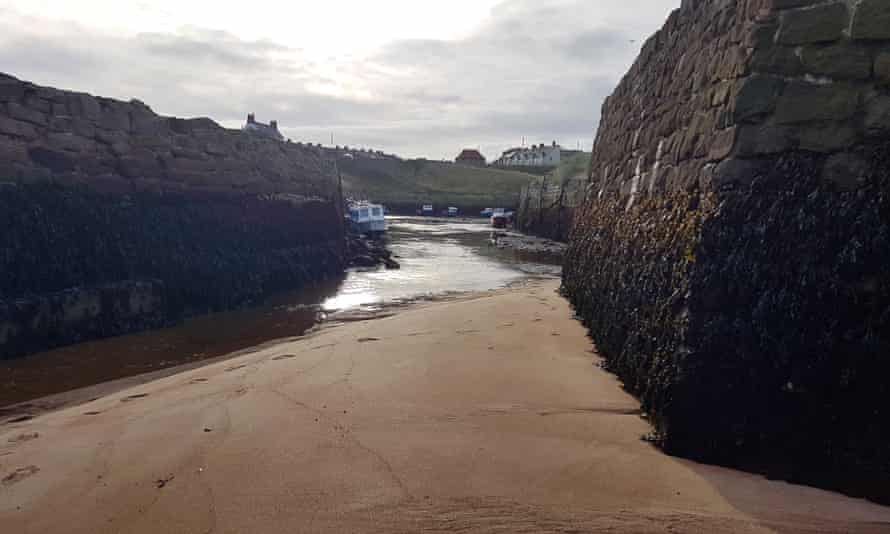Country diary: A harbour with history – and some characterful visitors
Seaton Sluice, Northumberland: Redshanks and a curlew mingle with the small boats Donna J, Wendy G and Wor Ted

The low tide at Seaton Sluice has left lines in the hard-packed sand, indentations like a map of Norway, all inlets and fjords. With no water in the narrow harbour, we can enter over a curving sandbank between high bladderwracked walls. It was this propensity to silt up which led to local landowner Sir Ralph Delaval having sluice gates built in the 17th century. These closed with the incoming tide to be reopened at low water, flushing out the sand and giving the town its name.
The further we get from the harbour mouth, the muddier it gets underfoot. Small boats have been left dry, their dank looped ropes attached to old tyres in the silty bottom. Their names speak of people, and I wonder who they were: Donna J, Elsie Eira, Wendy G, My Girl, Wor Ted.

Inland, the Seaton Burn turns sharply northwards towards the harbour entrance. By 1764 a new channel had been blasted through the land, creating The Cut, a straighter route to the sea. Each end of The Cut could be sealed to make a wet dock of up to six metres in depth, where ships could be unloaded whatever the tide.
This left a wedge of land known as Rocky Island, reached by a high footbridge. Once clustered with houses, it is now a windy knoll where yarrow, ragwort, coltsfoot and wormwood grow alongside white trumpets of bindweed and bristly burdock.
Below us, on the rocks, a thickly creamy wave dislodges a gathering of oystercatchers. They fly up with peeping calls, a flash of magpie feathers and red beaks, and settle down again. Redshanks methodically work the shallows. A curlew wades a rock pool, sending out circular ripples as it probes through the water with its slender arc of a bill.
Bobbing in the bay is a raft of eider ducks, affectionately known here as Cuddy’s ducks for their association with St Cuthbert, who offered them protection. Now, on the European red list of threatened species, the status of the common eider, Somateria mollissima, has just changed to endangered; this beautiful, characterful duck is common no longer.